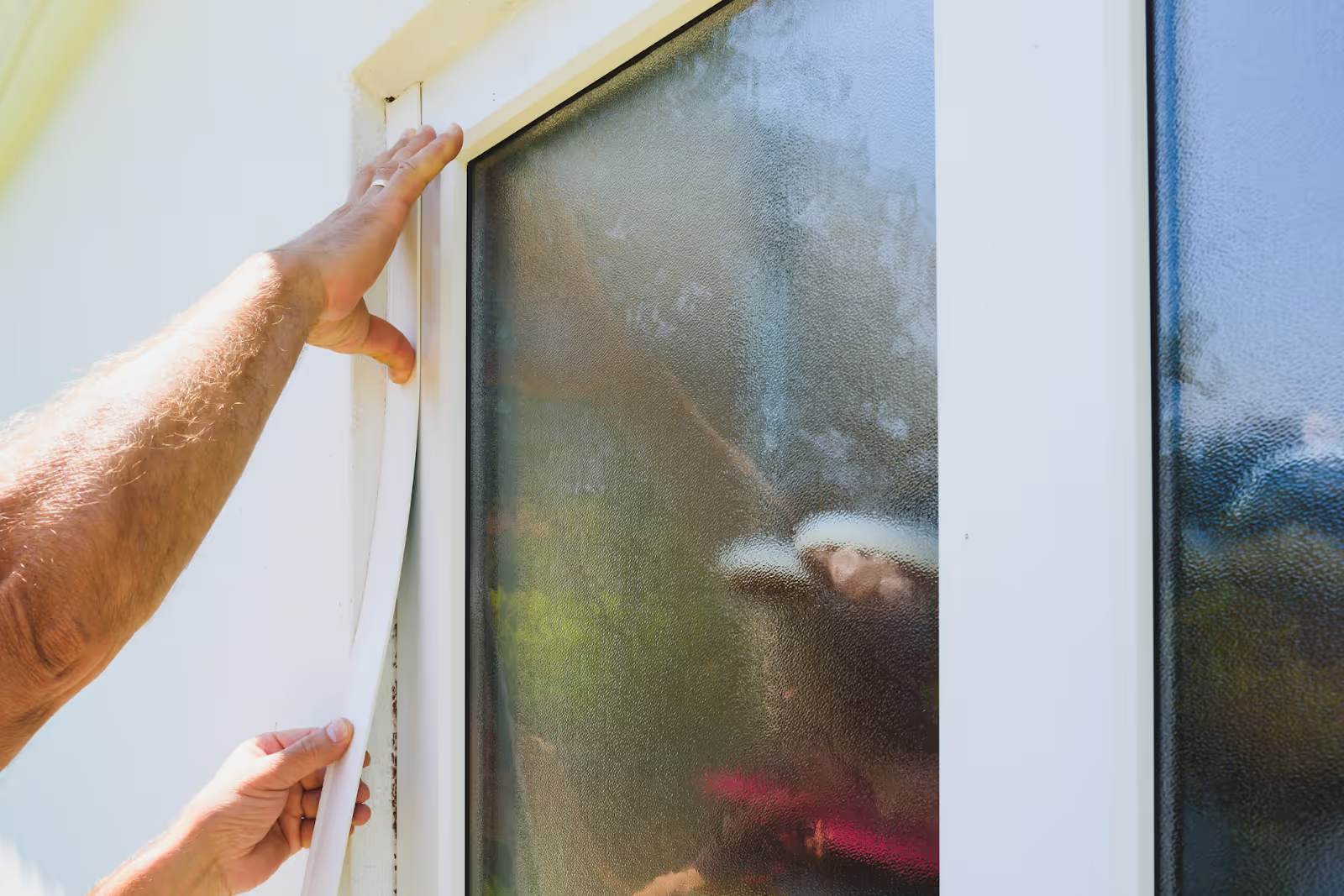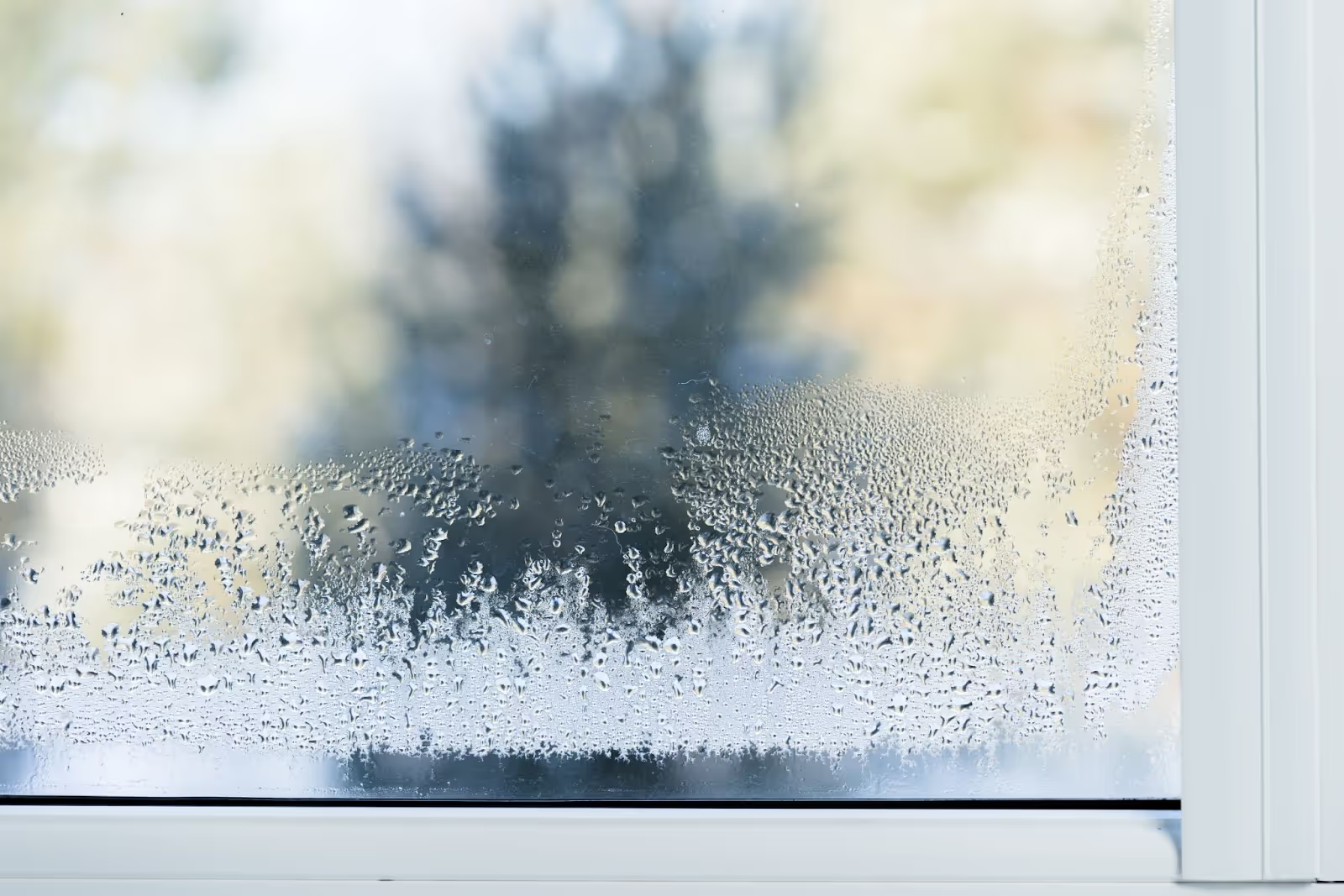Condensation on windows means moisture in the air is turning into water droplets on your glass, usually as a result of the temperature difference between the inside and outside of your home. Think of it like a cold drink sweating on a hot day—when warm, moist air hits a cold surface, water appears.
It’s a common occurrence, but is it a problem? For homeowners, window condensation can indicate issues in your home’s ventilation, air circulation, and insulation, or the windows themselves. The answer largely depends on where you find the condensation. Is it inside, outside, or in between the panes of glass?
Spoiler alert: when you see condensation between panes of glass, it’s time for a window replacement. Read on to learn more about the difference between types of window condensation and how to deal with them.
Condensation on Inside of Windows
If you see condensation inside window glass, your home has high indoor humidity. Simply put, there's too much moisture in your indoor air. This commonly happens due to:
- Hot showers creating steam,
- Cooking without using exhaust fans,
- Extensive use of a steam iron within a confined space, or
- Too many houseplants in one area.
Occasional condensation on windows is normal and nothing to worry about, but when you observe interior condensation without any direct cause, that’s a bad sign. It could mean that your home’s humidity is too high, which could potentially lead to:
- Mould and mildew growth
- Damage to wood and paint
- Increased allergens and dust mites
- Unpleasant odours
- Reduced indoor air quality

Image Source: Shutterstock
What to Do About Interior Window Condensation
You can manage condensation inside windows by controlling your home's humidity levels. Here are simple ways to reduce excess moisture in your air:
- Get your HVAC system checked.
- Purchase a standalone dehumidifier to control moisture in areas not connected to your HVAC (e.g., the basement, the attic).
- If you haven’t yet, install a high-functioning ventilation system for appliances like ovens, dryers, and radiators to mitigate the amount of heat and moisture they push into the home.
- Open your windows once in a while to balance the humidity levels inside the home. (Only do this when the outside and inside temperatures are similar to minimize the loss of heated or cooled air!)
Pro tip: If you consistently see heavy condensation on your windows, it might be time for an upgrade! Switch to window styles that promote natural ventilation to reduce moisture buildup and keep your home comfortable.
Window Condensation Between Window Panes
If you have a double or triple-pane glass window, you have what’s called an insulated glass unit (IGU). These windows are designed with multiple layers of glass with air or gas sealed between them to boost insulation.
The sealed design prevents the inside of the IGU from coming into contact with outside air, so condensation on windows like this only means the seal around the IGU has failed—and you have issues:
- The insulating gas (like argon or krypton) inside the glass has likely escaped.
- Outside air is getting inside the unit, causing moisture to build up.
- Your windows aren’t as energy-efficient as they should be.
- You may start noticing leaks or reduced insulation.

Image Source: Shutterstock
What to Do About Condensation Between Window Panes
When condensation on windows happens between glass panes, it means your IGU is leaky and is no longer insulating your home properly. Your best (and only) choice is to replace either the glass unit or the entire window.
Replace your IGU if any of the following occurs:
- The frame and other parts of your window are still in good condition
- Only one window has condensation
- The window is relatively new and the frame has no significant damage
Pro tip: Opt for low-E glass coating when getting a replacement. These IGUs give more insulation and lower the chances of condensation and fogging.
If the situation is worse and any of the instances below applies, it’s best to replace your entire window:
- Window condensation affects multiple (or all) windows
- Multiple windows are affected by condensation
- The window frames are damaged, rotting, or deteriorating
- You notice issues with leaks, drafts, or reduced insulation across several windows
- Your current windows are outdated and not energy-efficient
Pro tip: Choose condensation-resistant windows to get better insulation and prevent future condensation issues, especially in areas in Ontario with extremely cold temperatures or high humidity.
Condensation on Outside of Windows
Ever notice condensation outside of windows during warm, humid days? Exterior window condensation is most common during the summer—when most homeowners have their windows shut and their ACs on—as a result of the temperature difference between a cool interior and warm weather outdoors.
Here’s the good news: this type of condensation is a good sign your windows are doing a good job sealing and insulating your home. It means that they’re keeping cool air inside where you want it and blocking the warm air from sneaking in—allowing your AC to work efficiently without wasting energy.

Image Source: Shutterstock
What to Do About Condensation on Outside of Windows
If you’re bothered by foggy windows blocking your view, you can simply wipe away the condensation or let the sun do the work. It’ll clear up naturally when sunlight hits and warms the glass.
Switch to Durable, Energy-Efficient, and Stylish Windows For Your Home
Condensation on windows can be a sign your windows are well sealed—but not if it’s between glass panes. If you see moisture between your window panes, it’s time for a replacement.
Clera Windows + Doors has been designing and installing stylish, energy-efficient windowsfor over 40 years. As one of the most trusted manufacturers in the industry, we’re your solution for:
Our window experts are just one call away. Contact us today or schedule a FREE consultation to learn how we can transform your home with durable windows.








